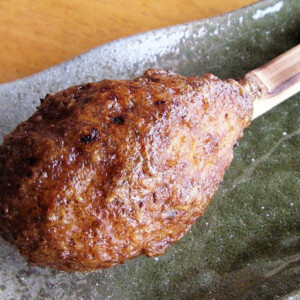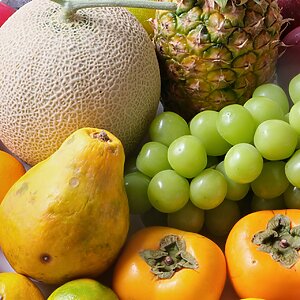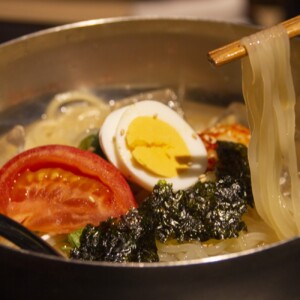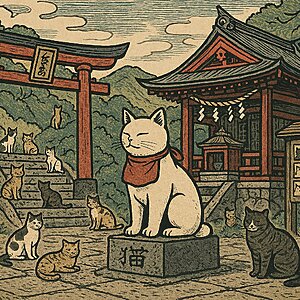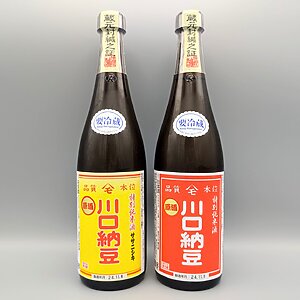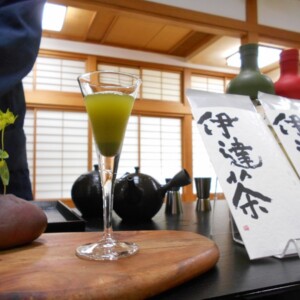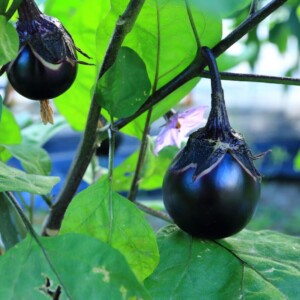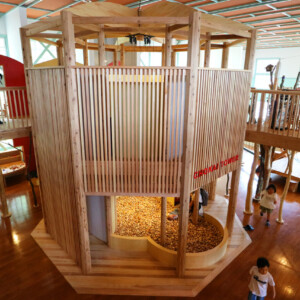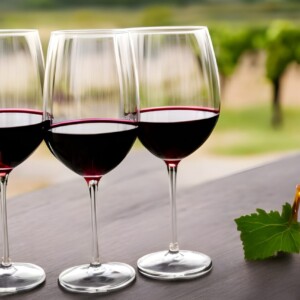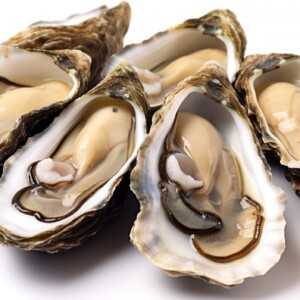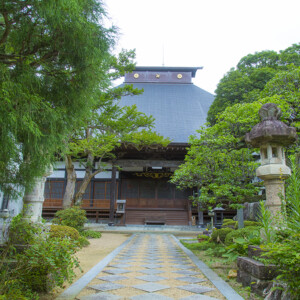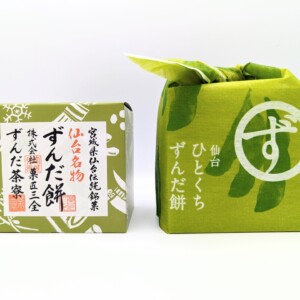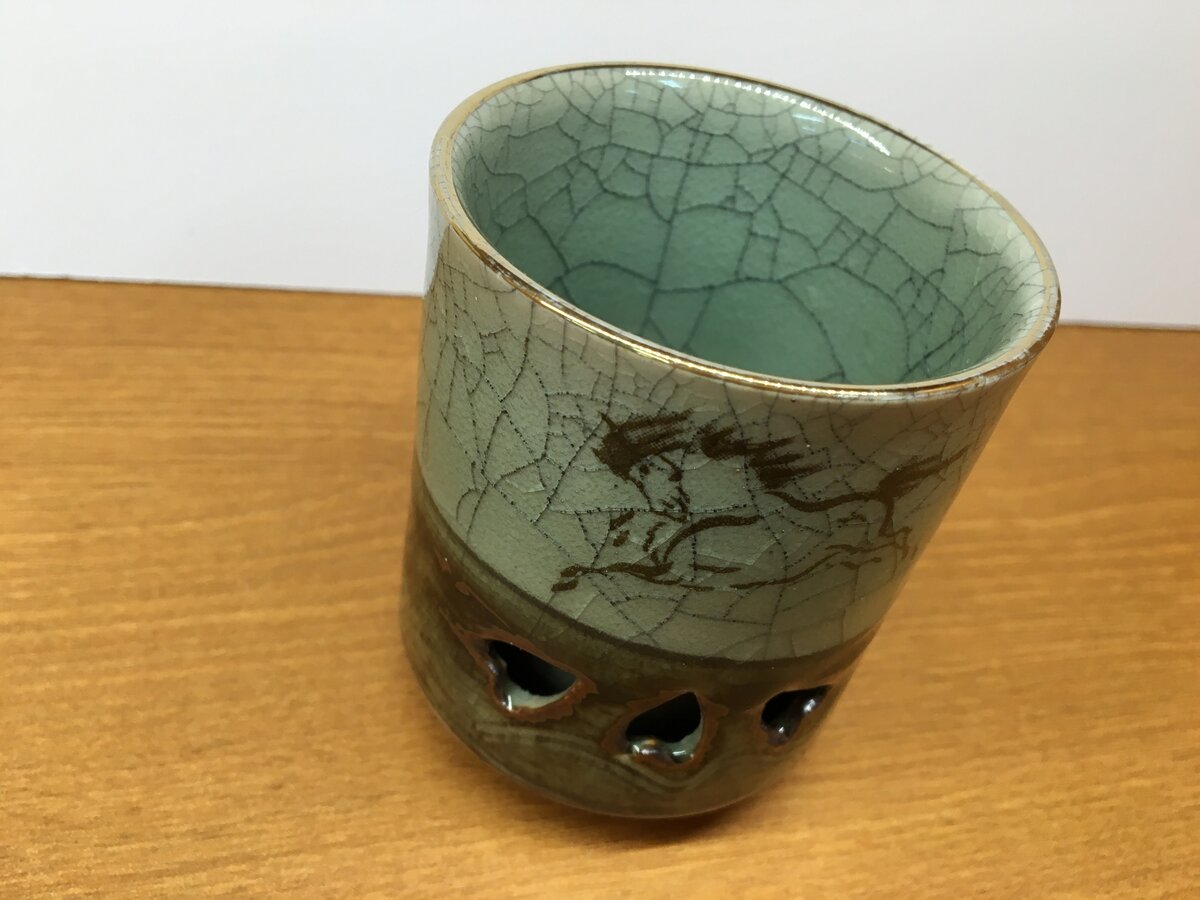
[Namie Town, Fukushima Prefecture] What is the traditional craft "Ohori Soma Yaki"? Introducing functional beauty that continues to show off people and a revival story
table of contents
Do you know " Ohori Soma ware This is a ceramic that has been handed down in Namie Town, Futaba District, Fukushima Prefecture. The bluish green ground color with fine cracks gives the image of a dashing horse. This is a traditional craft that is highly functional, in line with its beautiful appearance. The Great East Japan Earthquake had a jeopardy of its survival as if tradition would be ceased for a while, but thanks to the efforts and enthusiasm of craftsmen and Ohori Soma ware fans, the technology is still being passed down today.
This time, we will be introducing the theme of Ohori Soma ware and in depth delving into the history, charm, and present state.
What is Ohori Soma ware?
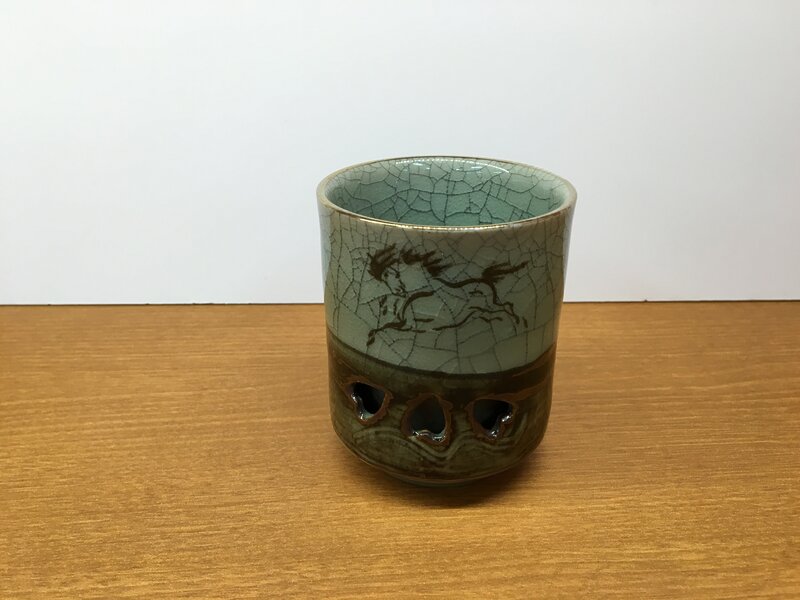
" Running a horse makes you sing ." This is the phrase that when you're riding a horse, you feel good and end up humming songs. Horse was a partner in life and sometimes a symbol of auspicious events. Ohori Soma ware, famous as a traditional craft of Fukushima Prefecture, is also painted with horse motifs.
Ohori Soma ware has three characteristics.
- Blue light
- Pictures
- Double fried
Blue cracks are fine "cracked patterns" that spread across the surface of a vessel. The representative color of Ohori Soma ware is greenish blue. This is because it mainly uses glazes containing iron. "Cracked patterns" occur during the process of cooling baked ceramics. intrusion sound sounds when a blue cracks in the container is a beautiful wind chime-like sound. The cracks are painted with ink, creating a more beautiful and distinctive pattern.
The pattern on the running pieces is also distinctive. In northern Hamadori, Fukushima Prefecture, there are many horse-related things, including Soma Nomaoi This seems to have been derived from the fact that the family crest of the domain lord, Soma, was a " tie horse " and that during the reign of the Soma Nakamura Domain, they trained farm horses and sent them out to war to protect the people. The sight of the horse running with great force was a great lucky charm to pray for martial arts and safety in the family.
As the name suggests, double fried fried means baking in double layers of a dish. When molding on a wheel, a vessel that will be the outside and an inner vessel will be made, and fitting them before firing. This creates a layer of air between the inside and outside, improving heat retention. The temperature of the drink inside is difficult to change, and the heat cannot be transmitted to your hands. It has the same structure as a thermos. This double ware is a very rare technique for traditional domestic crafts and requires skilled techniques.
History of Ohori Soma ware
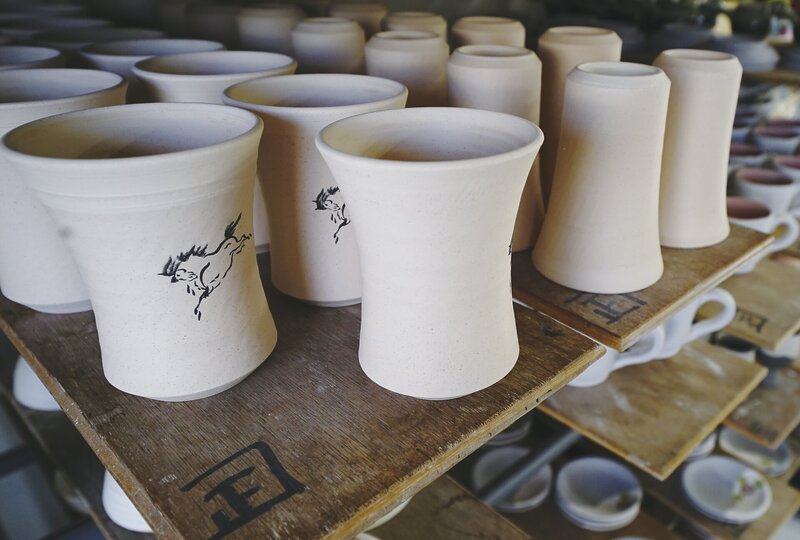
Ohori Soma ware began to be made in the Ohori area of Namie Town, Futaba District, Fukushima Prefecture. It is said to have a history of over 300 years. The Soma Domain provided generous support to spread the pottery, which has been produced by farmers and pottery craftsmen who have moved from other places, as a specialty product. The immigration of craftsmen was prohibited, and the ceramics used in the territory were ordered to be made from local produce, and the domain managed the purchase and sale of finished ceramics. As a result, at the end of the Edo period, the number of kilns increased to 120, making it a major production area.
During the Meiji period, the abolition of the domains and prefectures resulted in the disappearance of the Soma domain and the public aid stopped. With many pottery companies being forced to go out of business, conscription from the war also caused a major damage. After the war, thanks to the hard work of demobilizers and repatriates, Ohori Soma ware techniques have been passed down to future generations. However, due to the Great East Japan Earthquake and the Fukushima Daiichi Nuclear Power Plant accident, many pottery plants are once again in difficult situations. The entire area of Namie Town became an evacuation area, and the Ohori area was also designated as a difficult area to return, making it impossible to collect the clay and glaze, which are the key to ceramics.
However, amidst a difficult situation, Ohori Soma Ware makes a comeback. A pottery has also been released, where alternative clay has been selected, glazes are reproduced, and reopened in new places. The sight of him standing up over and over again without giving up on the difficulties gives him a strong vitality, almost like a running piece.
If you want to enjoy the world of Ohori Soma ware, we recommend Roadside Station Namie
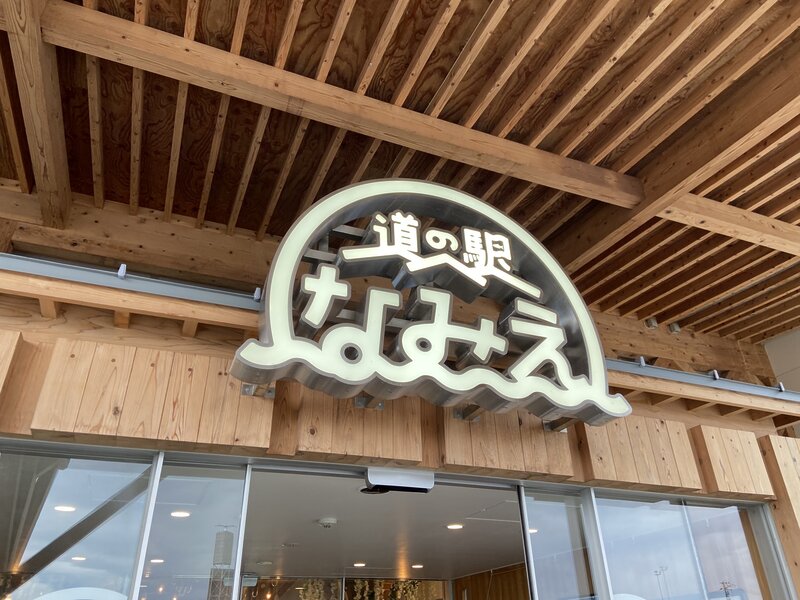
If you're looking to buy Ohori Soma ware, we recommend Roadside Eki Namie.
Roadside Station Namie has a building called " Namie no Techniques and Nariwaikan " and there is a corner where all of Ohori Soma ware works are displayed and sold. Although Ohori Soma ware is all called, there are a variety of works, including traditional style teacups and plates, as well as modern arrangements with ingenuity and ingenuity. It's a good idea to actually pick up the item and find a masterpiece that suits you.
The facility also holds ceramics trial classes. You can try creating original works, from hand-crafted shaping to painting. You can also hear beautiful intrusion sounds at the kiln site. It also has a brewery corner where the town's Suzuki Sake Brewery sells processed products made with sake, sake lees and sake, and a stylish cafe bar where you can enjoy sake along with Ohori Soma yaki dishes.
The main roadside station Namie main building has a food court where you can enjoy seafood and Namie yakisoba, as well as a space for children to play. It has an indoor play area and Lucky Park with a Pokemon motif, making it easy for family visits.
Roadside Station Namie <Information>
- Name: Roadside Station Namie
- Location: 60 Ikuseibashi Chimeiji, Namie-cho, Futaba-gun, Fukushima Prefecture
- Website: https://michinoeki-namie.jp/
Google Map
What is Namie Town, a place that tells of Ohori Soma ware?
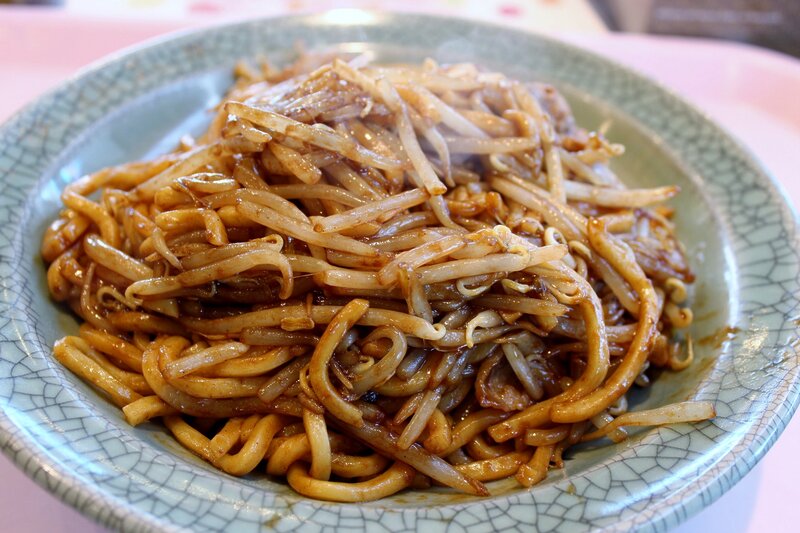
Namie Town, Futaba District, Fukushima Prefecture is a port town facing the Pacific Ocean. The sea along Fukushima Prefecture is the place where the Oyashio and Kuroshio Current collide, and the town's Kodo Fishing Port offers a wide variety of seafood.
In addition to seafood, Namie Yakisoba is a famous gourmet dish. He won the Grand Prix at the 8th B-1 Grand Prix, a B-grade gourmet festival held in the past, and spread his name. It features extremely thick noodles, simple ingredients such as bean sprouts and pork, and is a hearty gourmet food made with lard and rich sauce. It is said that this style has been achieved as a result of sought for workers to be satisfied and full.
Namie Town is currently working to promote smart communities, and is also attracting attention as it is taking advanced initiatives, such as the use of electric vehicles as public transport.
The official character for the town is " Uuuun ." As a rice fairy, she is said to have a rice cake with her body, her hair is salmon roe, and her regular position is in a bowl. There are also characters like father, mother, grandfather, grandmother, cousin, and friends. The loose look gives it adorable impression.
Ohori Soma ware, which is passed down with an indomitable spirit, will be in the future
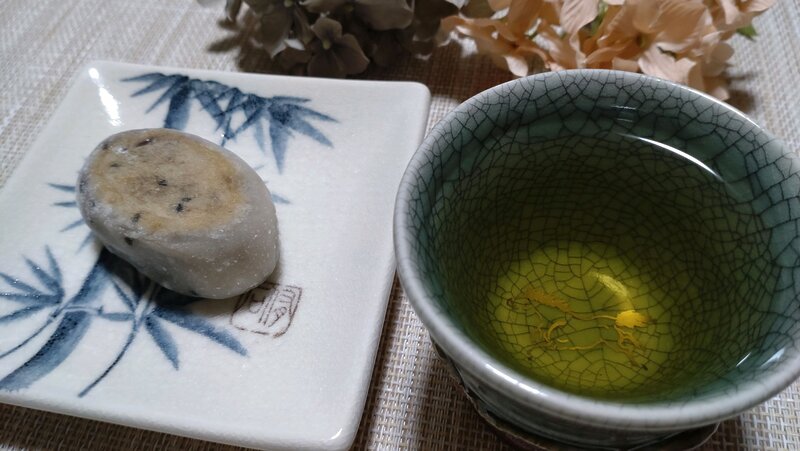
This time we introduced Ohori Soma ware, which is passed down in Namie Town.
Ohori Soma ware, famous as a craft in Fukushima Prefecture, is a ceramic that is characterized by its blue cracks, koma paintings, and double ware .
Ohori Soma ware has been facing many times in the midst of a lifetime, including wars and earthquakes, but the baton has been handed over to this day, and the hard work of craftsmen and local people struggling to "preserve traditions." It's only possible with effort.
Works from the kiln can be purchased at Roadside Station Namie. Please try picking it up and feel the beauty and charm of it.





![[Koriyama City, Fukushima Prefecture] You can see a nationally designated natural monument! What is the pegmatite dike at Kashima Ojingu? IMG_0375](https://jp.neft.asia/wp-content/uploads/2025/02/IMG_0375-150x150.jpeg)
![I don't want it even if I'm not a Dragon Quest fan! Sold out in just 2 minutes after release! "Suraimubehosunda Mochi" [Miyagi Prefecture] 2023-03-17 17.33.18 (1)](https://jp.neft.asia/wp-content/uploads/2023/04/2023-03-17-17.33.18-1-150x150.jpg)


![What is Shimizumori Namba, a traditional vegetable from Hirosaki City? Recipes and products recommended by locals! [Aomori Prefecture] Shimizu Mori Number](https://jp.neft.asia/wp-content/uploads/2024/08/5a3bed161f5e8c919cac218515ec5f95-150x150.jpg)
![Iburigakko tartare is super competent! Introducing basic usage and recommended recipes [Akita Prefecture] Iburigakko tartare](https://jp.neft.asia/wp-content/uploads/2024/08/1817660_m-150x150.jpg)
